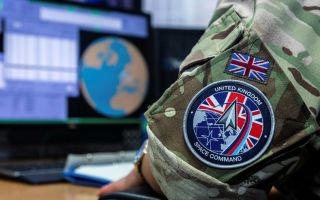China's aircraft launch using electromagnetic catapult: What it means for aircraft carriers
Technology on China's latest and most capable aircraft carrier has made it part of a very exclusive club, with the United States the only other nation with the same capability.
Three types of aircraft have been launched from the Fujian aircraft carrier using an electromagnetic catapult.
China's fifth-generation J-35 stealth fighter, 4.5-generation J-15T fighter and KJ-600 early warning and control aircraft have all been successfully launched using the advanced system.
The Electromagnetic Aircraft Launch System (EMALS) uses less energy and is more maintenance-friendly compared to its steam predecessor.
Some aircraft carriers use steam to propel the aircraft from the flight deck.
Now the US and China are paving the way across the water with new high-speed technology.
Why use an electromagnetic catapult?
An electromagnetic catapult can launch every 45 seconds, and it takes three seconds to launch an aircraft from the flight deck.
In terms of weight, the electromagnetic catapult can take a more varied payload, which means more types of aircraft can take off from the flight deck. This also means fewer adjustments between launches.
The catapult can consume as much as 100 million watts of energy – enough to power a small town for the same period of time.
Using electromagnetic rather than steam adds to the longevity of the carrier's flight deck and the aircraft launching, as it puts less stress on both.
Another advantage is the reduced thermal signature.
The US was the first to operate this new catapult system, which uses electromagnets.
The USS Gerald R Ford, the world's largest aircraft carrier, was certified for flight deck operations using the EMALS system in 2022, and showcased launching an aircraft from 0 to 100 knots in a matter of seconds.
It's unclear whether the US and China are operating under a similar system.
But the system is not just about launching aircraft quickly and safely; it's also about getting them back on board too.
With the Advanced Arresting Gear – the turbo-electric system is designed for controlled and reliable deceleration of aircraft – it means safer landings and more efficient recovery of the aircraft.
At the time, the UK rejected the gas-powered version of the catapult system – known as cats and traps – in favour of the ski ramp, as electromagnetic was not in existence for carrier consideration.









